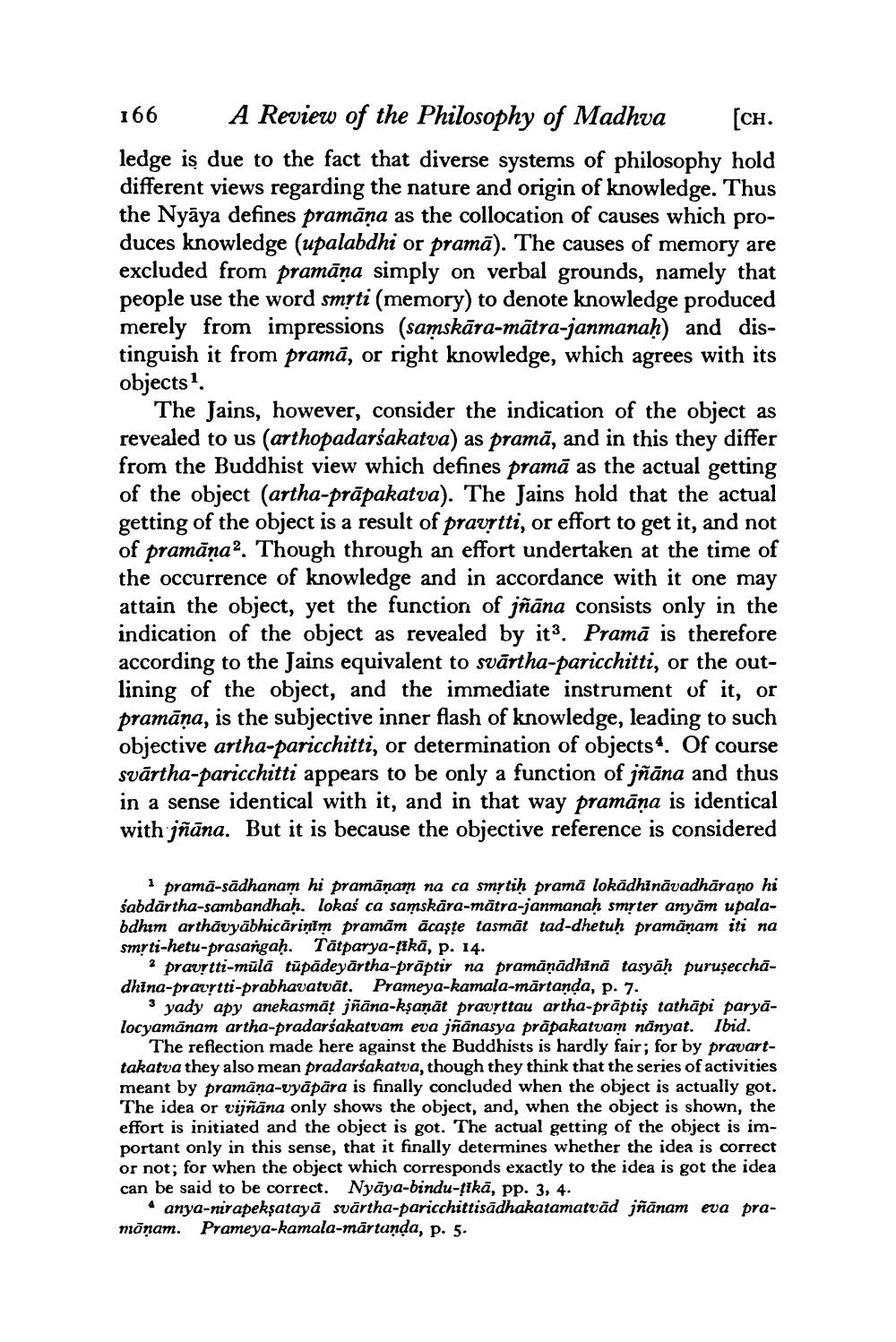________________
166 A Review of the Philosophy of Madhva (ch. ledge is due to the fact that diverse systems of philosophy hold different views regarding the nature and origin of knowledge. Thus the Nyāya defines pramāņa as the collocation of causes which produces knowledge (upalabdhi or pramā). The causes of memory are excluded from pramāņa simply on verbal grounds, namely that people use the word smrti (memory) to denote knowledge produced merely from impressions (samskāra-mātra-janmanaḥ) and distinguish it from pramā, or right knowledge, which agrees with its objects.
The Jains, however, consider the indication of the object as revealed to us (arthopadarśakatva) as pramā, and in this they differ from the Buddhist view which defines pramā as the actual getting of the object (artha-prāpakatva). The Jains hold that the actual getting of the object is a result of pravrtti, or effort to get it, and not of pramāna2. Though through an effort undertaken at the time of the occurrence of knowledge and in accordance with it one may attain the object, yet the function of jñāna consists only in the indication of the object as revealed by itd. Pramā is therefore according to the Jains equivalent to svārtha-paricchitti, or the outlining of the object, and the immediate instrument of it, or pramāņa, is the subjective inner flash of knowledge, leading to such objective artha-paricchitti, or determination of objects 4. Of course svārtha-paricchitti appears to be only a function of jñāna and thus in a sense identical with it, and in that way pramāna is identical with jñāna. But it is because the objective reference is considered
abdārtha návyabhich. Tatparina-práp
i pramā-sādhanam hi pramānam na ca smrtih pramā lokādhināvadhārano hi sabdārtha-sambandhah. lokaś ca samskära-mātra-janmanah smrter anyām upalabdhım arthāvyābhicărinim pramām ācaşte tasmāt tad-dhetuḥ pramānam iti na smrti-hetu-prasangaḥ. Tātparya-ţikā, p. 14.
? pravrtti-mūlā tūpādeyārtha-prāptir na pramāņādhinā tasyāḥ puruşecchadhina-pravytti-prabhavatvāt. Prameya-kamala-mārtanda, p. 7.
3 yady apy anekasmāt jñāna-kşanāt pravrttau artha-prāptis tathāpi paryalocyamānam artha-pradarśakatvam eva jñānasya präpakatvam nānyat. Ibid.
The reflection made here against the Buddhists is hardly fair; for by pravarttakatva they also mean pradarśakatva, though they think that the series of activities meant by pramāna-vyāpāra is finally concluded when the object is actually got.
The idea or vijñāna only shows the object, and, when the object is shown, the effort is initiated and the object is got. The actual getting of the object is important only in this sense, that it finally determines whether the idea is correct or not; for when the object which corresponds exactly to the idea is got the idea can be said to be correct. Nyāya-bindu-tikā, pp. 3, 4.
4 anya-nirapeksatayā svārtha-paricchittisādhakatamatvād jñānam eva pramõņam. Prameya-kamala-mārtanda, p. 5.




